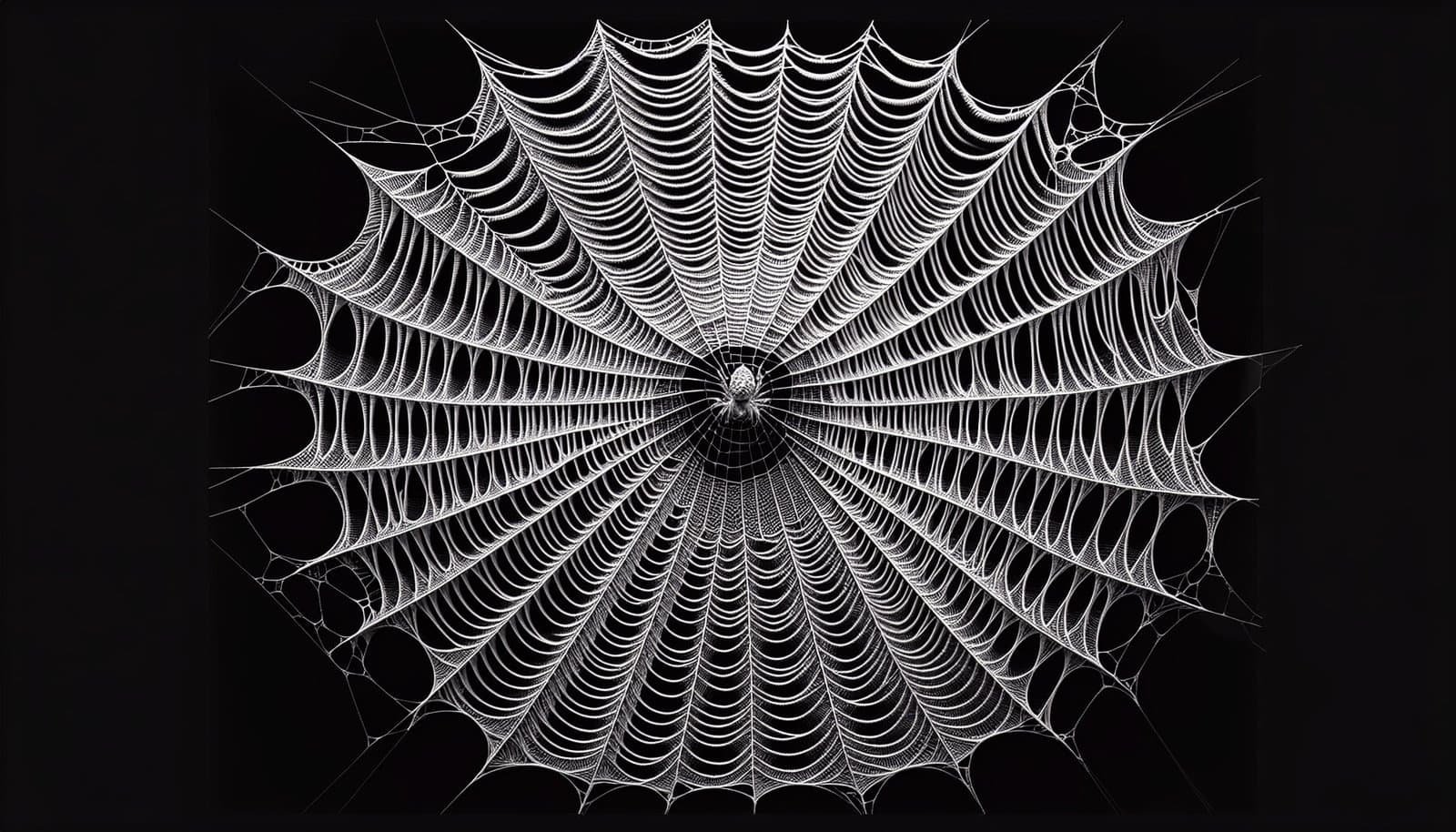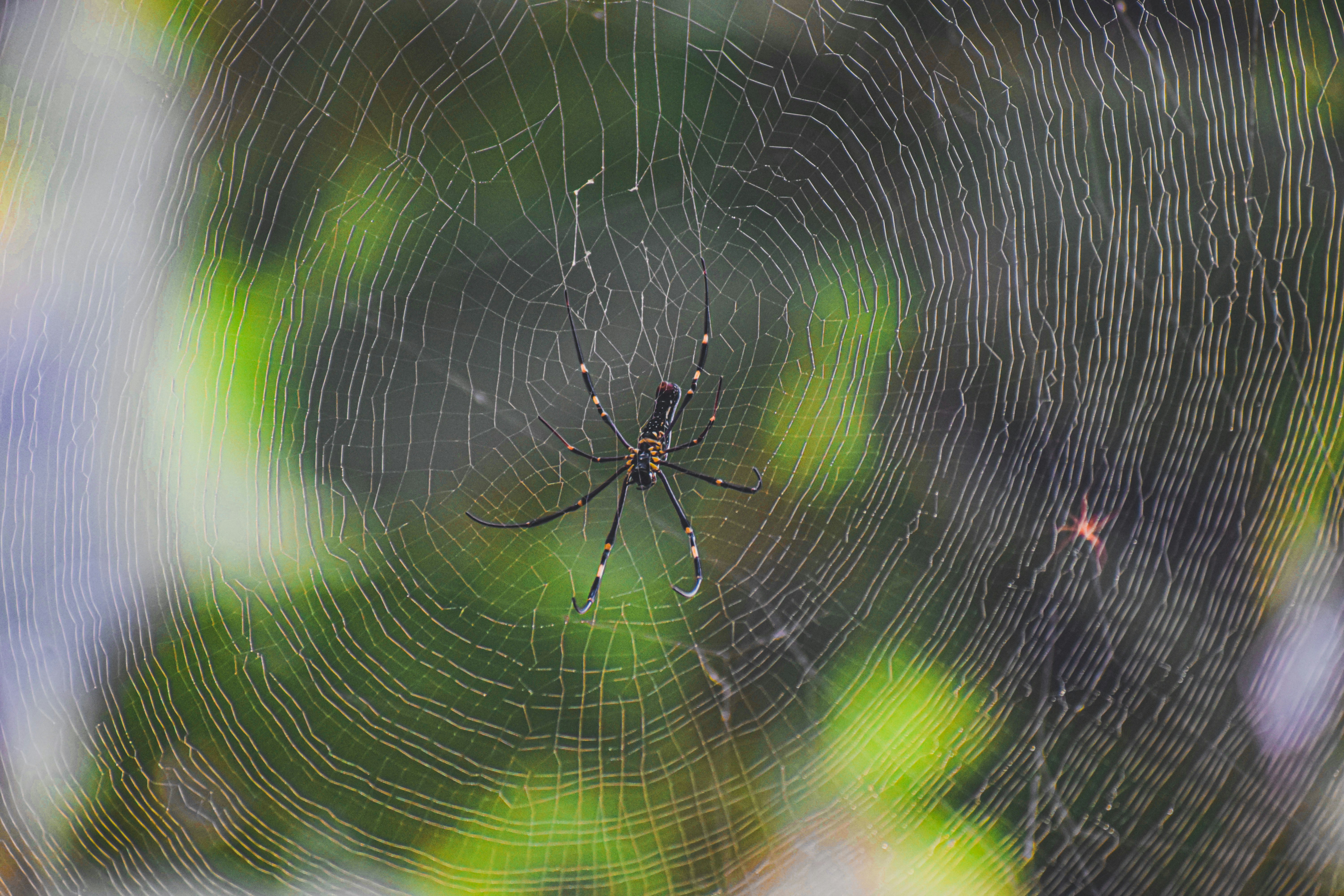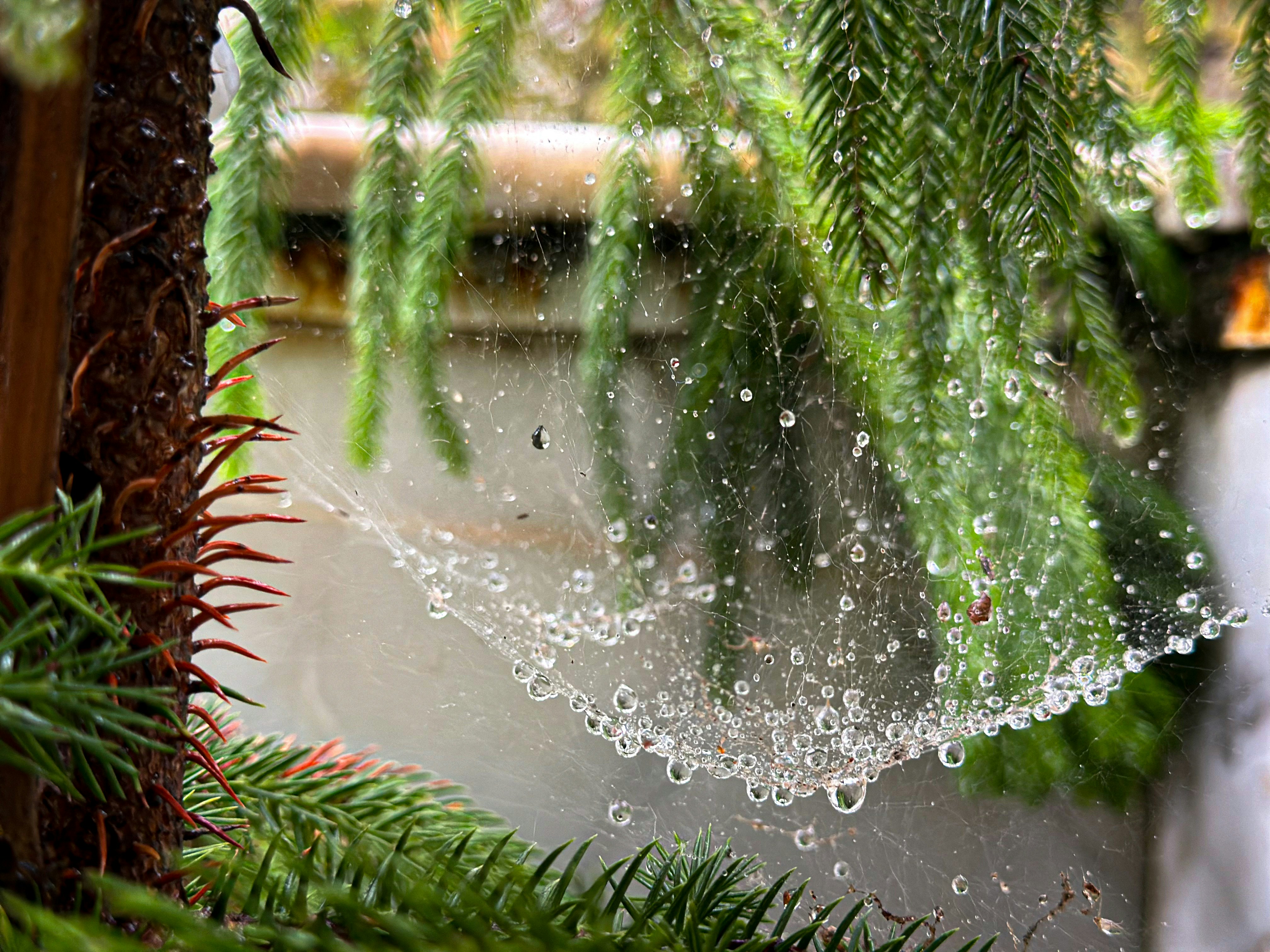Spider species are notorious for their exceptional web-spinning abilities, with orb-weavers often stealing the spotlight. However, beyond this well-known group, there is a fascinating world of arachnids that have mastered the art of constructing intricate webs. These lesser-known species, ranging from cribellate weavers to funnel weavers, boast their own unique architectural talents that are equally awe-inspiring. Delve into the captivating world of spider web architecture and discover the incredible skills of these unsung arachnid architects.
Introduction
When it comes to intricate web architecture, orb-weaving spiders often steal the spotlight. With their perfectly symmetrical circular webs, these master builders have long been celebrated for their engineering prowess. But are there any other spider species that display impressive web designs? In this article, we’ll explore the fascinating world of non-orb-weaving spiders and discover some lesser-known species that are equally skilled at constructing remarkable webs. From cobweb spiders to triangle weavers, sheet web weavers to funnel web weavers, and mesh web weavers to bolas spiders, prepare to be amazed by the diversity and ingenuity of these arachnids.
Orb-weavers: Masters of Web Architecture
Characteristics of Orb-weaving Spiders
Orb-weaving spiders, also known as orb-weavers, are renowned for their distinctive circular webs. These spiders belong to the family Araneidae and can be found across the globe, inhabiting a wide range of ecosystems. They have evolved specific adaptations that allow them to construct intricate webs that efficiently capture prey. Orb-weavers typically weave their webs in open spaces, between trees or shrubs, and patiently wait for unsuspecting insects to become entangled in their silk traps.
Notable Examples of Orb-weavers
One of the most well-known orb-weaving spiders is the golden orb-weaver (Nephila spp.). These large spiders, found in tropical and subtropical regions, weave golden-hued webs that can reach impressive sizes of up to several feet in diameter. Another notable orb-weaver is the garden spider (Araneus diadematus), commonly found in gardens and meadows across North America and Europe. These spiders create circular webs with a characteristic “X” shape in the center, adding an artistic touch to their architectural marvels.
Non-Orb-weaving Spiders with Impressive Web Architecture
Cobweb Spiders
Cobweb spiders, belonging to the family Theridiidae, are known for their irregular, messy-looking webs. These spiders often weave their webs in corners, crevices, and even inside houses. Despite their seemingly haphazard appearance, cobweb spider webs are cunningly designed to efficiently trap prey. Rather than relying on a centralized hub like orb-weavers, cobweb spiders create tangled networks of silk threads with strategically placed sticky strands to ensnare unsuspecting insects.
Triangle Weavers
Triangle weavers, also known as cydippid spiders (family Cydippidae), construct unique triangular-shaped webs. These spiders typically spin their webs between twigs, grass, or leaves, forming a distinctive three-sided structure. The three main support lines converge at a central hub and radiate outward, resembling an intricate geometric design. Triangle weavers are skilled architects, and their webs are designed to effectively capture flying insects in their triangular trap.
Sheet Web Weavers
Sheet web weavers, belonging to the family Linyphiidae, create flat, horizontal silk sheets with diverse mesh patterns. These spiders are often found in meadows, grasslands, and gardens, where their sheet webs can blend seamlessly into the surroundings. Sheet web weavers strategically place gumfoot lines, which are non-sticky silk threads, across their webs to detect vibrations caused by prey. Once an insect lands on the web, the spider quickly rushes in to capture its meal.
Funnel Web Weavers
Funnel web weavers, scientifically known as Agelenidae, construct funnel-shaped webs that are highly efficient for catching ground-dwelling insects. These spiders position themselves at the narrow entrance of the web’s funnel and use their long legs to detect vibrations. When prey ventures into the trap, the spider rapidly responds and immobilizes the unsuspecting victim. Funnel webs are often found in grassy areas, gardens, and forest floors, showcasing the spiders’ remarkable ability to adapt their web architecture to specific habitats.
Mesh Web Weavers
Mesh web weavers, belonging to the family Dictynidae, create intricate nets with a mesh-like pattern. These spiders intricately weave their silk strands into a complex network of irregular shapes, often resembling irregular pentagons or hexagons. Mesh webs are typically built in low vegetation or near the ground, and they are designed to catch small insects and arthropods. Mesh web weavers’ webs are visually intriguing and demonstrate the spiders’ striking ability to create diverse patterns.
Cobweb Spiders
Characteristics of Cobweb Spiders
Cobweb spiders, also known as comb-footed spiders, are part of the family Theridiidae. This large family includes thousands of species that are distributed worldwide. Cobweb spiders are known for their habit of building tangled, seemingly disorganized webs. These webs consist of random threads with sticky droplets attached to them, allowing the spider to ensnare its prey. Cobweb spiders are typically small in size, ranging from a few millimeters to a few centimeters in length.
Impressive Cobweb Spider Species
One notable cobweb spider species is the black widow spider (Latrodectus spp.), notorious for its venomous bite. Black widows are known for their messy cobweb-like webs, which they build in dark, secluded areas. Despite the disarrayed appearance of their webs, black widows skillfully construct airtight retreats within their capture webs, where they can safely await their prey. The labyrinthine nature of their webs adds an extra layer of complexity to their architectural prowess.
Triangle Weavers
Characteristics of Triangle Weavers
Triangle weavers, members of the family Cydippidae, are named after their unique triangular web structures. These spiders are often found in grasslands, fields, and gardens. Triangle weaver webs consist of three distinct support lines converging at a central hub, forming a triangular shape. The inner regions of the web usually contain sticky threads that ensnare flying insects, while the outer regions consist of non-sticky threads that act as support lines.
Impressive Triangle Weaver Species
One impressive example of a triangle weaver is the triangle orb-weaver (Hyptiotes spp.). These spiders are known for their remarkable ability to contract their web quickly, launching themselves towards their prey once trapped. The triangle orb-weaver has a specialized band-shaped web that remains taut when at rest, ready to snap into action when triggered. This unique adaptation allows the triangle orb-weaver to surprise and ambush its unsuspecting prey.
Sheet Web Weavers
Characteristics of Sheet Web Weavers
Sheet web weavers, belonging to the family Linyphiidae, construct flat, horizontal webs. These spiders are commonly found in grasslands, meadows, and gardens. Unlike orb-weavers that create three-dimensional webs, sheet web weavers spin their silk threads in a single plane, resulting in a sheet-like structure. The spiders often place non-sticky gumfoot lines, which act as tripwires, across their webs, alerting them to the presence of prey.
Impressive Sheet Web Weaver Species
The hammock spider (Pityohyphantes phrygianus) is a remarkable sheet web weaver. It creates an intricate hammock-like web, with a dense mesh of silk near the center and sparse strands towards the edges. This species skillfully camouflages its web by attaching plant debris, making it nearly invisible to unsuspecting insects. The hammock spider’s web architecture showcases the spider’s ability to adapt its web design to blend seamlessly into its environment.

Funnel Web Weavers
Characteristics of Funnel Web Weavers
Funnel web weavers, scientifically known as Agelenidae, construct funnel-shaped webs that are highly effective for capturing ground-dwelling insects. These spiders are found in a variety of habitats, including grasslands, forests, and gardens. Funnel webs consist of a flat sheet of silk that gradually narrows into a silk-lined tunnel. The spider waits at the entrance of the funnel, detecting vibrations caused by prey walking across the web.
Impressive Funnel Web Weaver Species
The grass spider (Agelenopsis spp.) is a notable funnel web weaver that is commonly found in North America. This spider constructs horizontal sheet webs with funnel-like retreats. The grass spider’s web architecture showcases the spider’s ability to adapt its web design to efficiently trap prey in its ground-dwelling habitat. With its tunnel-like structure, the grass spider can swiftly respond to vibrations caused by potential meals, ensuring a successful catch.
Mesh Web Weavers
Characteristics of Mesh Web Weavers
Mesh web weavers, belonging to the family Dictynidae, create intricate nets with a mesh-like pattern. These spiders are often found in low vegetation, on the ground, or near water bodies. Mesh webs consist of irregularly shaped silk strands forming pentagons, hexagons, or other irregular polygons. This architectural design allows the spider to capture small insects and arthropods that come into contact with the web.
Impressive Mesh Web Weaver Species
The bowl and doily spider (Frontinella communis) is a fascinating example of a mesh web weaver. This small spider constructs a delicate, mesh-like web with a bowl-shaped structure in the center. The bowl functions as a shelter and feeding platform, while the mesh design acts as a trap for small insects. The bowl and doily spider’s web is visually captivating and highlights the diversity of web architecture among spiders.

Lesser-known Spider Species with Notable Web Architecture
Dome Sheet Weavers
Dome sheet weavers, belonging to the family Linyphiidae, construct dome-shaped webs. These spiders are often found in grasslands and meadows. Dome sheet webs consist of a sheet-like structure that is stretched across tall vegetation, forming a convex shape. The spiders position themselves underneath the dome and wait for prey to become entangled in the web.
Bolas Spiders
Bolas spiders, scientifically known as Mastophora spp., have a unique hunting strategy and web design. Instead of constructing a traditional web, bolas spiders create a single thread with a sticky droplet attached to the end, resembling a fishing line with a lure. The spiders swing the bolas thread back and forth to simulate the fluttering motion of a moth or other flying insect. When an insect is within range, the bolas spider skillfully strikes and captures its meal.
Bolas Spiders
Characteristics of Bolas Spiders
Bolas spiders, belonging to the genus Mastophora, are known for their peculiar hunting technique and web design. These spiders strategically position themselves and use a specialized bolas thread to attract and capture their prey. Bolas spiders often mimic the pheromones released by female moths to lure male moths into striking range. This unique hunting strategy showcases their adaptation to prey on specific flying insect species.
Impressive Bolas Spider Species
The exquisite bolas spider (Mastophora dizzygaster) is a remarkable example of the bolas spider family. This species displays a high level of precision and accuracy in its hunting technique. It skillfully manipulates the length and curvature of its bolas thread, accurately imitating the flight patterns of moth prey. The exquisite bolas spider’s mastery of its unique web architecture is a testament to the fascinating diversity of spider hunting strategies.
In conclusion, while orb-weaving spiders remain synonymous with impressive web architecture, there is a wealth of other spider species that possess remarkable abilities in constructing intricate webs. From cobweb spiders to triangle weavers, sheet web weavers to funnel web weavers, and mesh web weavers to bolas spiders, each species showcases its unique architectural design and hunting strategies. The world of spiders is filled with awe-inspiring complexity and ingenuity, leaving us in awe of these remarkable arachnids.



